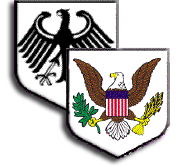Articles and Reviews
Review of John A. Roebling and his Suspension Bridge on the Ohio River, by Clara Harsh
The Palatine Immigrant. 33:1(2007): 31.
John A. Roebling and his Suspension Bridge on the Ohio River by Don Heinrich Tolzmann. 2007. 88 pp. illus. index. softbound. ISBN 978-1-932250-47-3. Little Miami Publishing Co. P.O.Box 588 , Milford , Ohio 45150-0588 . $12.95 + $3 p&h. Ohio Residents add 91cents sales tax.
The Roebling suspension bridge still stands, a tribute to Johann August Roebling, a German born 12 June 1806 in Mühlhausen, Thuringia. He was educated at the Gymnasium in Mühlhausen and the Realschule in Erfurt. He then went to Berlin and enrolled in the Royal Polytechnic Institute where he studied engineering. His first work as an engineer was road construction in Westphalia for the Prussian government. During this time he became interested in bridges and wrote a thesis focusing on the Bamberg suspension bridge. After meeting Johann A. Etzler, who had spent seven years in America and was actively promoting immigration to America, Johann Roebling and his brother Carl Friedrich, read everything they could about life in America. They read Duden's account about the wonderful life there, and set about gathering together a group of Germans who wanted to emigrate. The group swelled to several hundred from the Mühlhausen and Darmstadt area.
Etzlar published a book expounding on life in America and proposing establishing a German colony in America . The Roebling brothers sailed to America from Bremen on 21 May 1831, entrusted with six thousand dollars, and instructed to find a suitable place for a colony of Germans. After investigation, they purchased 1600 acres of land about 20 miles north of Pittsburgh in Butler County, Pennsylvania and named their new settlement Germania, later changing the name to Saxonburg. He sent precise instructions to the people at home so they could come the easiest and cheapest way from Germany.
Roebling settled into farming, but soon was working on canal projects in Pennsylvania. He noted the weakness of the hemp ropes or chains that were used and had the brilliant idea of braiding wire to make a much more durable product. He began to manufacture wire cables in his small factory in Saxonburg. As the wire cables were used more and more, he moved his factory to Trenton, NJ. By 1850, he had built a total of four suspension bridges using his wire cables.
Kentucky approached Roebling about the possibility of a bridge across the Ohio River connecting Covington and Cincinnati . Ohio residents will not be surprised that the Ohio Legislature demurred and took two years to decide that a bridge might be a good idea. When the charter to build the bridge was finally agreed on in 1849, the State of Ohio added a rider that no street in Cincinnati could be in line with the proposed bridge. The numerous objections were that slaves could come easily from south to north and flee their owners, Ohio businesses would lose business to Kentucky, a bridge would cause ice jams and floods and steamboat companies feared loss of business.
Roebling signed the contract to build the bridge across the Ohio River between Cincinnati and Covington and in 1856 and construction began. The advent of the Civil War stopped construction, and the bridge was not completed until 1892. It still stands.
Roebling's legacy: from 1844 to 1883, he engineered 10 bridges. The Cincinnati-Covington span is 1056 feet. The Brooklyn Bridge exceeded it with a span of 1595 feet, the last bridge designed and built by John A. Roebling in 1883. His sons continued his bridge-building until 1952. The Golden Gate Bridge with a span of 4200 feet was their greatest achievement, and the longest span. This small book is a fascinating study of a brilliant German immigrant who made his mark on his chosen country with his engineering feats. The many illustrations add interest to the text.
